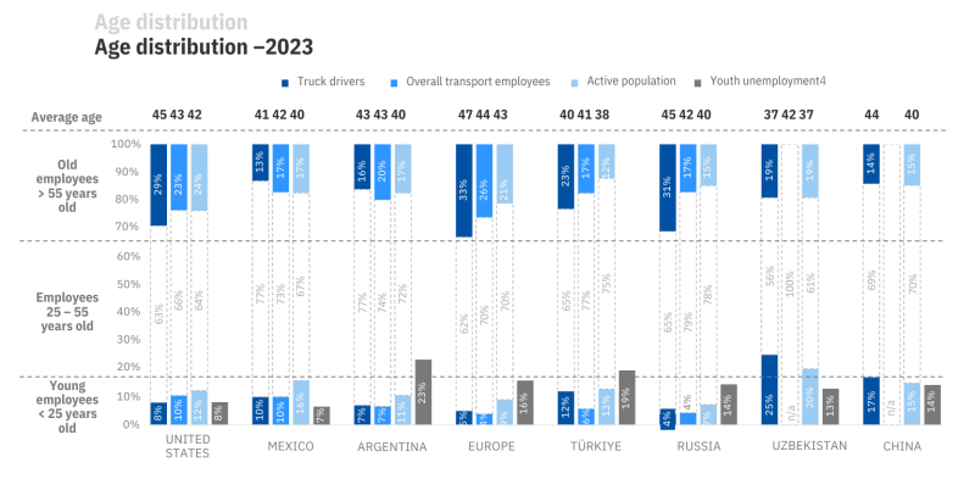
It’s no secret that finding and retaining drivers is a challenge. Trucking companies lose or rehire more than 90 truck drivers for every 100 they hire over one year. These companies also have to compete with their peers to attract drivers in an industry with an acute labor shortage, with more than 78,000 unfilled truck driver positions in the U.S. and rising.
Following are six strategies to help fill the driver’s seat and keep your trucking company rolling.
Set a competitive compensation package. Truck driving among the most demanding jobs on the market, so wages should compensate for the stress and challenges of this career. Most U.S. companies pay truckers an average of $24.10 per hour. Offering hourly wages above this level can help improve retention rates and attract job seekers.
However, base pay isn’t the only compensation that truck drivers consider when looking for work. Other considerations include sign-on bonuses, milestone incentives and health insurance.
Few strategies can beat giving a healthy sign-on bonus to attract new drivers. One approach is to out-offer the competition with a bonus well above the industry average. However, this may encourage job-hopping, with drivers leaving for employers with similar incentives. To avoid this problem, haulage companies could offer other bonuses later in the employment cycle, such as 90-days in, and other forms of compensation.
Companies can institute bonuses for reaching certain milestones, such as six months, one year and five years of employment. Another option could be reaching specific mileage targets, such as a bonus for every 1,000 miles driven.
According to the U.S. Census Bureau, 15% of truck drivers don’t have health insurance — far above the national average of 10%. Such a wide gap makes it easy for long-haul drivers to choose an employer that provides health benefits over those who don't.
Carriers could also provide, as part of competitive compensation, retirement packages, paid vacation days and fuel and maintenance allowances.
Provide quality equipment and standard operating procedures. Drivers with access to these are happier and will likely work at the same company for an extended period. A small investment in providing them with the right equipment to improve comfort and convenience will undoubtedly pay off in spades in the form of lower turnover rates.
Drivers need advanced load management tools, a GPS, tire thumpers, and other tools. The right truck seat cushion can help enhance comfort and ensure better support on long-haul trips. A multi-tool kit, backup cameras, tough flashlights, portable coffee maker, and digital tire pressure gauge can also help make life on the road easier.
In addition, consider offering maintenance contracts to ensure quick roadside assistance, and fuel cards with incentive programs, such as those with free hot showers and tool routes.
Social media has made it easier for drivers to learn about the working conditions of their peers as well as the tools they use. Employers should be on the lookout for the latest technology and services, while dispatchers can encourage drivers to share information on emerging trends they’re seeing out on the road.
Ensure effective communication. Regular communication with drivers helps to create a satisfying workplace, while strengthening relationships and fostering an atmosphere of caring.
For example, dispatchers could call to check on drivers to ensure they’re OK. Simple questions about how the journey is progressing, whether they’ve encountered any challenges, what the weather conditions are, and whether the driver has eaten and rested well can make them feel they’re a valued team member.
Likewise, drivers should feel that they can always reach out to management with suggestions, and that their feedback on working conditions will be taken seriously.
Avoid micromanaging. Truckers value their autonomy and sense of freedom that the open road gives them. They don’t want to be overly controlled, preferring to make their own plans and be involved in the decision-making process, such as choosing which route to take. It’s important to note that the majority of truckers in the U.S. are older than 55, with decades out on the road. With this experience comes first-hand knowledge, causing them to bristle at any perceived micromanagement from someone younger and less seasoned.

Image source: https://www.iru.org/news-resources/newsroom/worse-you-thought-truck-driver-shortages-and-demographics
By training dispatchers on the importance of autonomy, and building trust with drivers, companies can go a long way toward striking a balance between staying in contact with teams and avoiding being overly intrusive. GPS tracking software with real-time updates can alleviate the need for constant monitoring.
Allow for a healthy work-life balance. Truck driving is one of the jobs with the worst work-life imbalances, due to limited physical movement, heavy traffic, bad weather, narrow pickup and delivery windows, and long, lonely days on the road, isolated from family and friends.
Policies can lead to a positive balance between work and personal life include:
- Flexible work hours and scheduling options;
- Access to mental health classes or resources;
- Vacations after a specific time of service;
- Allowing drivers to bring a rider or pet on the road (if allowed by insurance), and
- Installing an audio entertainment system in the rig.







